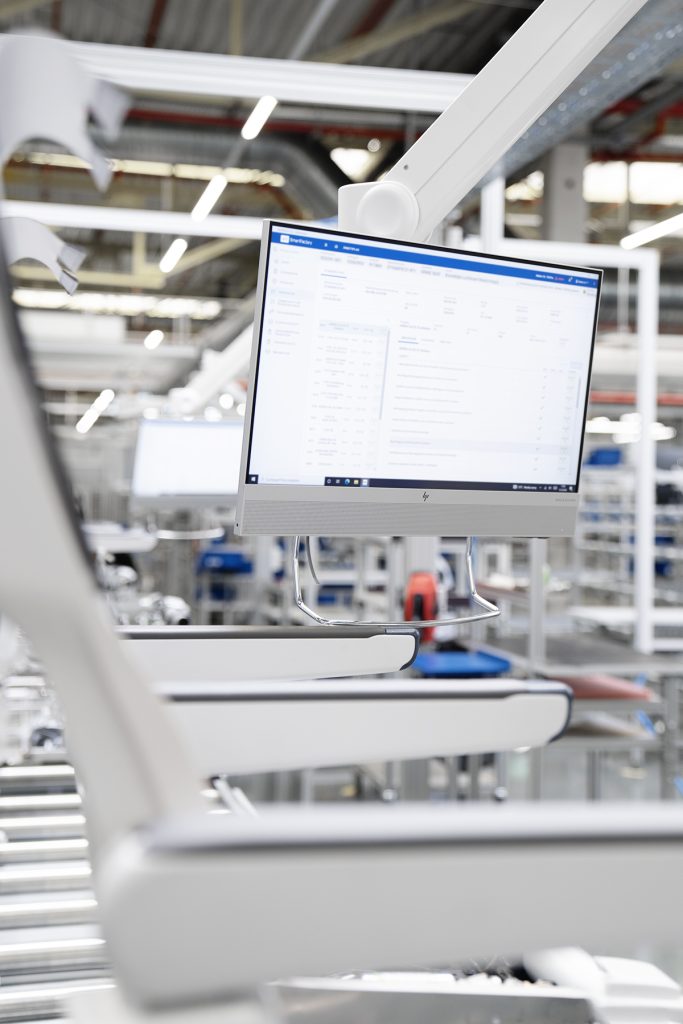In the complex world of manufacturing, production control is the linchpin that holds all operations together. As the nerve center of a manufacturing plant, its efficiency and effectiveness are paramount. But how do we elevate its capability to a zenith of optimal performance? The key lies in integrating innovative IT solutions.
Current Challenges in Production Control
Manufacturing plants globally grapple with multifarious challenges. From mitigating human errors to enhancing efficiency and minimizing waste, the hurdles are substantial yet not insurmountable. In an era where technology is the catalyst for change, the manufacturing sector is not immune to its transformative touch.
Production control involves planning, scheduling, directing, and regulating the production process in a manufacturing facility. It ensures that the production process is efficient, cost-effective, and meets the quality standards. Several challenges persist in production control, and they may continue to evolve. Some of these challenges include:
-
- 1. Technology Integration: Integrating new technologies like AI, IoT, robotics, etc., into existing production systems can be complex and expensive.
-
- 2. Supply Chain Disruptions: Various factors like natural disasters, pandemics, geopolitical issues can disrupt the supply chain, affecting production control.
-
- 3. Workforce Issues: Aging workforce, skills gap, and labor shortages are common problems.
-
- 4. Quality Control: Maintaining consistent product quality amidst cost reductions and efficiency improvements can be difficult.
-
- 5. Data Security and Privacy: The increased use of digital technologies opens up vulnerabilities to cyber-attacks and data breaches.
-
- 6. Environmental and Sustainability Concerns: There’s increasing pressure to reduce emissions, waste, and energy consumption.
-
- 7. Customization Demands: Consumers demand personalized products, leading to the need for flexible production systems.
-
- 8. Global Competition: Manufacturers face stiff competition, leading to price wars and the need for innovation.
-
- 9. Regulatory Compliance: Adhering to a myriad of regulations that vary by country and region can be complex.
-
- 10. Real-Time Decision Making: Fast-paced production environments require real-time data and decision-making capabilities.
The Role of Technology in Manufacturing

Technology plays an integral role in the contemporary manufacturing landscape, streamlining operations and enhancing productivity. Systems such as Overall Equipment Effectiveness (OEE) are pivotal, offering insights into machine efficiency and operational productivity by measuring availability, performance, and quality. Meanwhile, Manufacturing Execution Systems (MES) facilitate information flow and management, ensuring real-time data tracking and analytics to optimize manufacturing processes. Computerized Maintenance Management Systems (CMMS) elevate the maintenance protocols, aiding in scheduling, tracking, and managing maintenance tasks to mitigate downtimes and ensure the seamless operation of machinery. Additionally, technologies like automation, robotics, and artificial intelligence are revolutionizing manufacturing, enabling precision, speed, and customization at scales previously unattainable. Consequently, technology is not only an enabler but a catalyst, propelling manufacturing into an era of enhanced efficiency, reduced costs, and increased competitiveness.
How can modern solutions for manufacturing solve production control problems?
In the dynamic environment of modern manufacturing, production control is pivotal to ensure operational efficiency, quality, and responsiveness to market demands. Manufacturers are leveraging advanced software modules of MES or OEE systems to navigate complex challenges control and optimize their production lines. These modules, ranging from machine connectivity to master data management, are embedded with features that promote real-time data accessibility, automated quality inspections, efficient defect handling, and insightful analytics. Below, we delve into how specific software modules enhance production control, ensuring that manufacturing operations are agile, data-driven, and resilient in the face of evolving challenges and opportunities.
1. Technology Integration:
-
- Machine Connectivity: Ensures that the existing system can easily communicate with new technologies, easing the integration process.
-
- Online Visualization: Real-time data update based on reports or machine cycles aids in integrating AI and IoT technologies.
2. Supply Chain Disruptions:
-
- Production Execution: Real-time display of progress and KPIs helps in monitoring the impact of supply chain disruptions.
-
- Dashboard & Reports: Offers insights on production and machine status, enabling quick decisions during disruptions.
3. Workforce Issues:
-
- Digital Documentation: Helps in training new staff and bridging the skills gap through easily accessible digital resources.
-
- Quality Inspections: Automated inspections reduce the dependency on skilled labor.
4. Quality Control:
-
- Quality Inspections: Automatic feedback, dedicated instructions, and documentation ensure consistent quality.
-
- Dashboard & Reports: Allow for monitoring quality metrics in real-time.
5. Data Security and Privacy:
-
- Machine Connectivity: Data buffering ensures data preservation, and protocols can be enhanced for security.
-
- Master Data: The management of production data, including security and privacy controls.
6. Environmental and Sustainability Concerns:
-
- OEE Analysis: Helps in identifying areas of inefficiency where energy can be saved or waste reduced.
-
- Machine Connectivity: Monitoring machine status and process parameters aids in optimizing energy use.
7. Customization Demands:
-
- Production Execution: Supports flexible production systems to cater to diverse and customized products.
-
- Traceability: Ensures that customization demands are met with accuracy.
8. Global Competition:
-
- Dashboard & Reports: Provides analytics to stay ahead of global trends and competition.
-
- OEE Analysis: Identifies areas for improvement to enhance competitiveness.
9. Regulatory Compliance:
-
- Digital Documentation: Helps in managing and accessing documents required for regulatory compliance.
-
- Quality Inspections: Ensures products meet the set standards and regulations.
10. Real-Time Decision Making:
-
- Online Visualization: Offers real-time data on production, aiding quick decision-making.
-
- Maintenance ANDON: Real-time reporting and monitoring of failures, ensuring immediate action.
Each of these modules plays a critical role in enhancing the efficiency, security, and flexibility of the production environment, thus addressing the outlined challenges. Integration of these modules into a cohesive system will optimize the production control in the factory, making it more responsive and adaptive to both internal and external challenges.
What benefits can be achieve through proper production control software?
-
20% operating time increase
-
15% defects quantity reduction
-
5% material consumption reduction
-
35% changeovers time reduction
The production control in a manufacturing plant is undergoing a transformation. IT solutions stand as the catalysts, not just enhancing efficiency but redefining the very paradigms of production control. In this evolving narrative, every manufacturing plant is not just a testament to technological innovation but a harbinger of an era where efficiency and innovation are intertwined, each fueling the other in a dance of evolution.
Products in this Article

Paperless Manufacturing
Paperless Manufacturing Streamline your manufacturing with ANT PAPERLESS. Digitize forms, improve communication, and access data securely from anywhere, creating a more efficient and sustainable operation.

MES System – Manufacturing Execution System – ANT Solutions
System MES – Manufacturing Execution System 0 % operating time increase 0 % defects quantity reduction 0 % material consumption reduction 0 % changeovers time

Manufacturing Operations Management System (MOM)
Manufacturing Operations Management System (MOM) The most complete manufacturing solution with full support for operations management and a link between industrial automation and business operations

